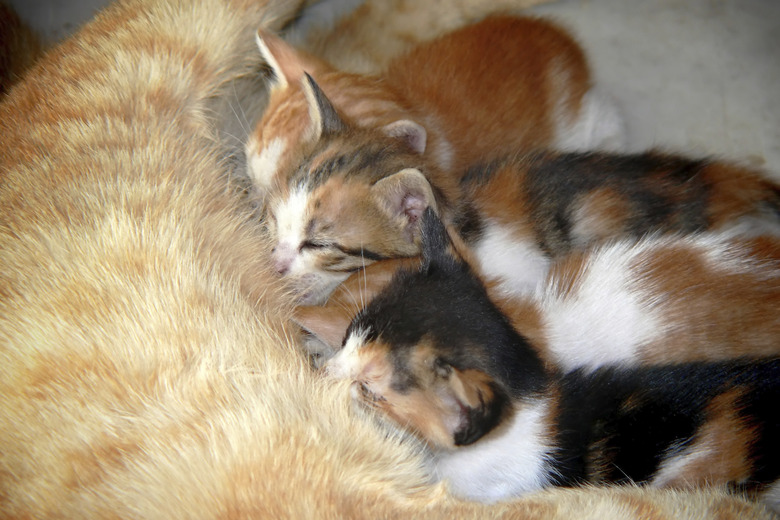How To Find Out Your Pregnant Cat's Due Date
If you happen to know the date when your pregnant cat mated, calculating an approximate due date for the birth of her kittens is a simple matter of counting days on a calendar. If you suspect that your cat may be pregnant, but you do not know when or if she conceived, your observations and some basic diagnostic imaging will help to confirm her pregnancy and determine her delivery date.
Gestational Period for Cats
Gestational Period for Cats
From the date of conception, the average gestational period for a cat ranges from 63 to 65 days. You can count these days on a calendar, or simply expect the furry little bundles between 9 and 10 weeks from the date that your cat mated. Some cat breeds, such as the Siamese, deliver as late as 71 days. Kittens who are born earlier than 60 days are not likely to survive. If you are uncertain of whether or not your cat is pregnant, making a few observations and a trip to your veterinarian is the only way to know if motherhood is looming.
Signs of Early Pregnancy
Signs of Early Pregnancy
You may not notice any unusual signs or behavior during the first two weeks of pregnancy. During the third week, her nipples will start to appear pink and swollen. By the fourth week, your veterinarian can feel palpable lumps in your cat's abdominal area. An ultrasound can verify that these lumps are kittens instead of abnormal masses. An ultrasound is safe for the mother and her kittens, and is an effective method for detecting heartbeats.
The Next Four Weeks
The Next Four Weeks
Over the course of the next four weeks, your expectant mother will be eating for multiples, evidenced by noticeable weight gain and a rounder appearance on the sides. Healthy weight gain during the gestation period is 20 to 25 percent of the cat's normal weight. After day 45 of the pregnancy, an ultrasound can reveal the fetal skeletal structures that have begun to calcify. This will determine how many kittens she is carrying. In the absence of an ultrasound, an abdominal radiograph can provide the same information.
Preparing for Delivery
Preparing for Delivery
During her last week of pregnancy, your cat will start to scope out potential locations where she prefers to give birth to her kittens. These choice spots are usually isolated, warm and cozy. By the close of that week, you may notice drops of milk from her nipples, and enlarged mammary glands. Her appetite will decrease sharply. She may stop eating during the day or two before delivering her kittens. Once her rectal temperature drops to 98.5 to 100 degrees, she should go into labor within 24 to 48 hours.
Keep Watch
Keep Watch
When you notice your cat licking intently at her abdomen and genital area, her labor is commencing. She may pace and become vocal. More than 99 percent of feline births succeed with no human intervention or complications, but you should observe the entire process from an unobtrusive distance. Once her contractions have begun, she should give birth to the first kitten within an hour. Each subsequent kitten can take from 10 to 60 minutes to make its appearance. The entire litter should be delivered within six hours. If the labor extends past seven hours, or if the mother appears to be in pain or distress at any time during her labor and delivery, she and the kittens should be taken promptly to your veterinarian or to the nearest 24-hour emergency veterinary hospital.
Always check with your veterinarian before changing your pet's diet, medication, or physical activity routines. This information is not a substitute for a vet's opinion.
